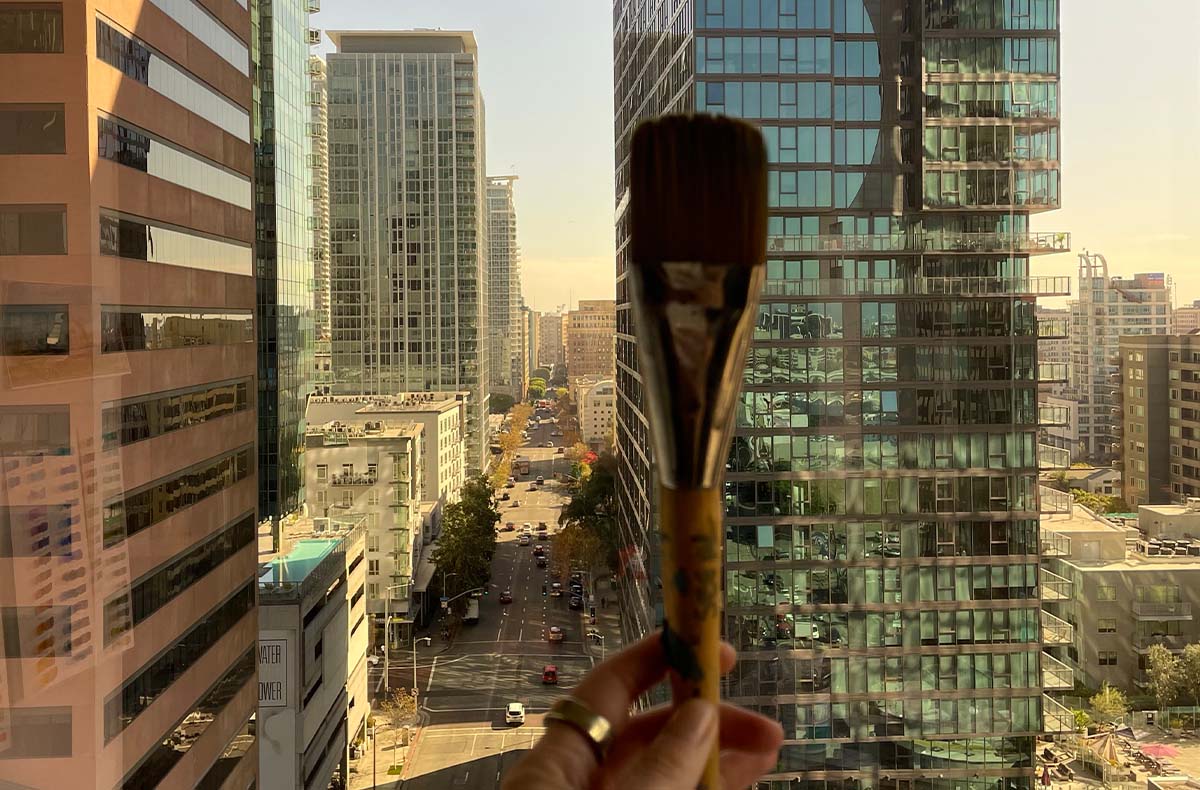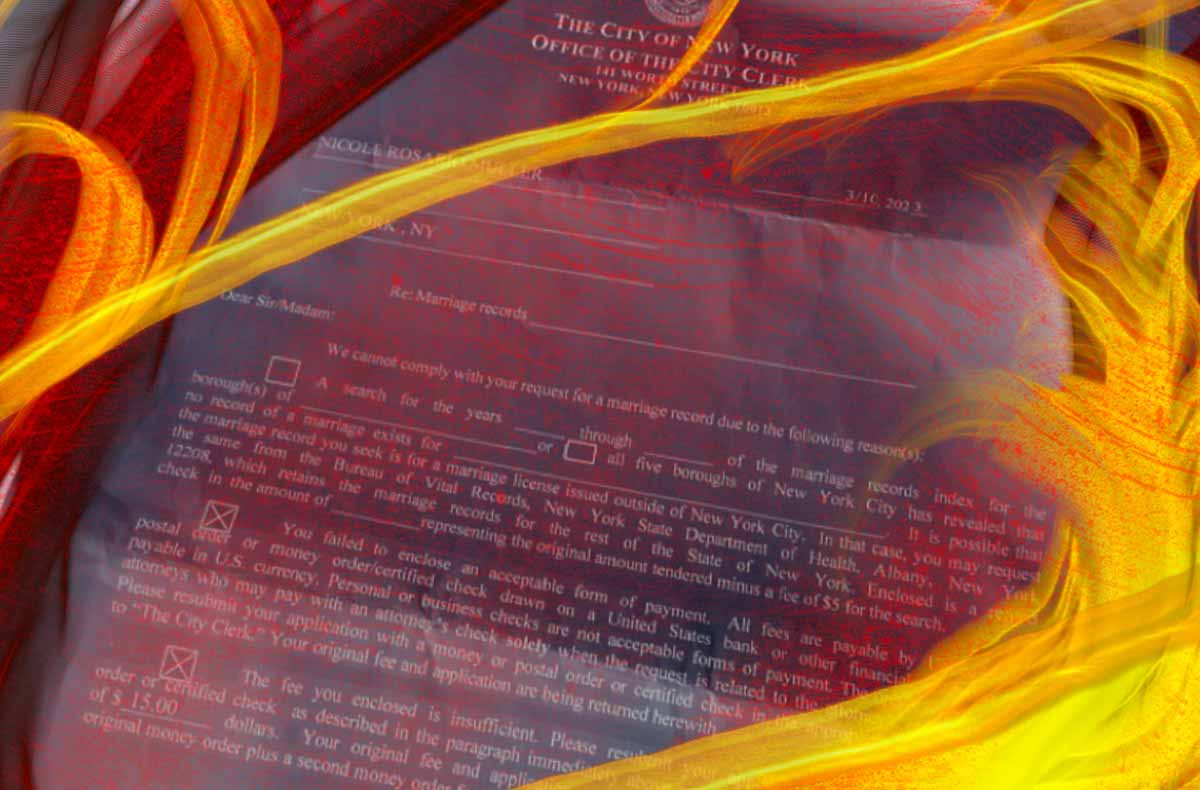
It’s dark days for the arts in America—but that’s not a new story. Since the 1970s recession, arts education has been first on the chopping block, considered an expendable “frill.” This perspective was only reinforced by the No Child Left Behind Act, and, in spite of the fact that 88% of the American public supports art funding, it was still the cut most states made to close their budget deficits after the first year of COVID.
Not surprisingly, support for the arts is even harder to find after graduation. While the National Endowment for the Arts fortunately survived the Trump presidency, its budget for financial support has long been whittled down to a number so small, its existence is more symbolic than substantive. Although the NEA was originally founded to ensure democratic access to the arts, it is private donors who largely wind up footing the bill for the arts today. But gaining such sought-after support is a job in and of itself. The bulk of residencies and grants are exceedingly difficult for your everyday artist to land, and many of them come with their own requirements and constraints that add even more struggle to the artist’s already challenging existence, such as requiring recipients to relocate from their homes and offering only a small stipend on which to get by. For many, art has to take the back burner to a host of other flexible jobs, which is hardly nurturing of the creative process. As Michelangelo said, “art is a jealous thing: it requires the whole and entire man.” It’s hard to imagine the muse striking after a long bartending shift.
The American system for supporting the arts is failing. But if there’s one thing we’ve learned since 2020 slapped us all in the face, now is a perfect time to try something new: which is precisely what the Los Angeles office of Quinn Emanuel Urquhart & Sullivan LLP decided to do late last year.
John Quinn, partner and founder of Quinn Emanuel, was a longtime supporter of the arts well before the pandemic. In 2016, he worked with curator Alexis Hyde to open the Museum of Broken Relationships in Hollywood, after discovering the original museum while traveling in Croatia, and wound up offering her an unused office at the firm to use as her headquarters. John’s devotion to all things Los Angeles, paired with Alexis’ intimate knowledge of the city’s vibrant talent and systemic institutional flaws made them a dream team for disrupting the LA art scene. In 2020, when the pandemic left much of Quinn Emanuel’s LA offices empty with many working from home permanently, John and Alexis saw a unique opportunity. Instead of leaving these offices empty, why not add value to the workplace’s culture and put them to creative use? In Alexis’s words: “What if, instead of a pool table, we had an artist?” And so the concept for the law firm’s artist residency was born.
After brainstorming together, John and Alexis landed on a few key goals for their inaugural residency: It would be open to anybody in the greater Los Angeles area, with the specific goal of supporting emerging, underrepresented local artists to give them a boost in launching their careers and the space to create a body of new work. In the spirit of the NEA’s original mission, Quinn Emanuel’s residency aimed to be democratic and inclusive, with the lowest bar to entry as possible in its straight-forward application. Artists would be given a generous stipend of $5,000 a month and flexible use of their own (corner!) office for four months (expanded from the original plan of three, once that was deemed “too rushed”). After winnowing down 140 applications to two final candidates with three other jury members, John and Alexis found themselves unable to decide: so both Edgar Ramirez and Molly Segal became Quinn Emanuel’s first artists-in-residence.
Over the course of four months, Edgar and Molly commuted daily to the firm’s location in downtown LA, which is also easily reached by subway or bus. While Alexis originally imagined the artists would set up shop near her in some of the smaller offices available on the second floor, John wanted to go big: so Edgar and Molly both got corner offices, chosen by drawing straws—Edgar on the fifth floor, Molly the 10th, overlooking the former Staples Center (now Crypto.com Arena). They could work whenever was most convenient for them—Molly, who preferred creating in the mornings, would come in early, while Edgar would come in the afternoon and work late into the night.
For four months, Edgar and Molly got to be artists like Michaelangelo envisioned, giving themselves over to their art wholly and entirely. They didn’t have to worry about subletting their house or finding a second job as many other residencies might require. The location allowed them to work undistracted, not worrying about their supplies being stolen, and allowing them to invite gallerists and collectors to see their work in progress in a warm, inviting space—a sharp contrast to most artist’s workspaces, which tend to be in far-flung industrial areas or rougher neighborhoods for affordability. When interviewed, Molly described how priceless it was to have “that kind of freedom” and “room to quiet some of those outside anxieties a little bit,” while Edgar described the opportunity as simply “life-changing.” The starving artist might be a romantic notion, but it’s a myth. Instead, John and Alexis have asked: imagine the art our artists could create when well-fed?
While the benefit of the residency was unquestionable for Edgar and Molly, it was equally enriching to the workplace culture of Quinn Emanuel. The litigators at Quinn Emanuel had the unique experience of gaining creative inspiration while learning firsthand what goes into creating art from start to finish, just by occupying the same space as these artists daily. Some workplaces might add a ping pong table or bean bags to let employees blow off steam: at Quinn Emanuel, employees got an inside view into the artist’s process. When the artists’ work went up this January at the Show Gallery—chosen for its central, accessible location—Alexis heard constantly how happy and proud everyone at the firm felt to have been a part of this work’s genesis. For lawyers who generally stay siloed in their area of expertise, it was a magical experience to get to see these artists’ work evolve. This sense of pride extended to the other Quinn Emanuel offices—feeling a sense of connection and patronage, a number of people from offices in other cities have also purchased pieces that they otherwise would never have seen or heard of.
As is fitting for this love letter to the arts in LA, the next artist residency at Quinn Emanuel is slated to start on February 14; John, Alexis, and their fellow jury members are presently sifting through the 200 applications in order to decide. They encourage Angeleno artists of any and all disciplines to apply to the next round of applications, which will open this spring.
While Quinn Emanuel is certainly blazing the trail with their artist residency, Alexis hopes that she and John are starting a trend that will reverberate throughout the city—perhaps even across the country, as a wider shift of how we support and nurture our artists. Countless offices are already adorned with art—much of it at a far higher price point than a $20,000 residency for an up-and-coming artist. As Alexis aptly notes: “If you’re spending money on the art, you can spend money on the artist.” Supporting an artist in residence enriches not only to the company, but to the wider culture of the city as a whole.
As more of us return to the office, Quinn Emanuel’s artist residency offers a visionary concept other companies would be well-served to consider. With the Great Resignation inciting leagues of people up to the executive level to leave their jobs, it’s now more important than ever that employees find their work rewarding on a deeper level. Money is not enough to keep top talent and stave off burnout—but creating a workplace culture that fosters creativity and vision in a very concrete, real way just might.



